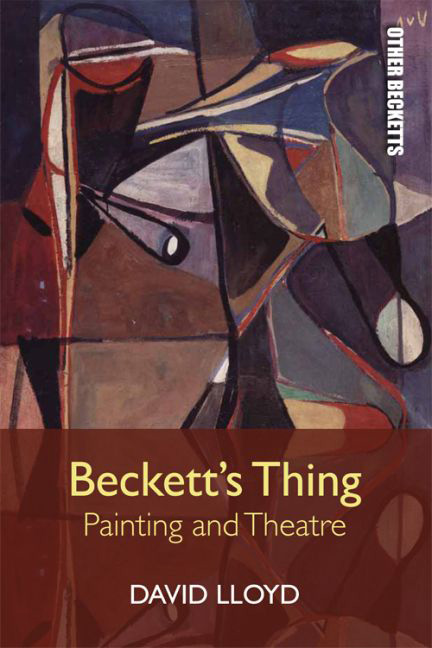Book contents
- Frontmatter
- Contents
- List of Figures
- Acknowledgements
- Other Becketts: Series Preface
- Introduction: The Painted Stage – Beckett's Visual Aesthetics
- 1 Republics of Difference: Yeats, MacGreevy, Beckett
- 2 Beckett's Thing: Bram van Velde and the Gaze
- 3 ‘Siege laid again’: Arikha's Gaze, Beckett's Painted Stage
- Conclusion: The Play's the Thing
- Bibliography
- Index
3 - ‘Siege laid again’: Arikha's Gaze, Beckett's Painted Stage
Published online by Cambridge University Press: 10 May 2017
- Frontmatter
- Contents
- List of Figures
- Acknowledgements
- Other Becketts: Series Preface
- Introduction: The Painted Stage – Beckett's Visual Aesthetics
- 1 Republics of Difference: Yeats, MacGreevy, Beckett
- 2 Beckett's Thing: Bram van Velde and the Gaze
- 3 ‘Siege laid again’: Arikha's Gaze, Beckett's Painted Stage
- Conclusion: The Play's the Thing
- Bibliography
- Index
Summary
Siege laid again to the impregnable without. Eye and hand feverishly after the unself. By the hand it unceasingly changes the eye unceasingly changed. Back and forth the gaze beating against unseeable and unmakable. Truce for a space and the marks of what it is to be and to be in face of. Those deep marks to show.
Samuel Beckett, ‘For Avigdor Arikha’Beckett's relationships with Jack B. Yeats and Bram van Velde were both the friendships of a younger man with an older artist from whom he felt he learnt and to whom he paid homage. Close as those friendships were, the circumstances of war and exile as well as their shared reticence meant that meetings between the writer and those artists were generally infrequent and, given their predilections, notoriously characterised by extended silences. Beckett's deep reflections on their painting and the example he could draw from it in a period when his own practice was still coming into definition were thus in a certain sense monological, as he clarified the terms of his own aesthetic by way of a detour through intense encounters with their work in a different medium. Indeed, Beckett's sense, deeply felt if possibly misplaced, that his writings on van Velde had been to the detriment of the painter comes through in various pentimentos addressed to Georges Duthuit and Jacques Putnam as he responded with great reluctance to their requests for further writings on the artist. Those regrets are not always easy to separate from what becomes apparent in his letters and in various remarks made to acquaintances: Beckett's feeling that his and van Velde's aesthetic paths parted after a while, or that he had exhausted what he had to learn from the painter. For whatever reasons, the intense friendship between Beckett and van Velde clearly subsided after the early 1950s, though the mutual respect endured, much as Beckett's friendship and correspondence with Duthuit himself virtually ceased after several intense years of dialogue.
- Type
- Chapter
- Information
- Beckett's ThingPainting and Theatre, pp. 154 - 220Publisher: Edinburgh University PressPrint publication year: 2016



